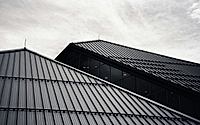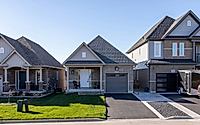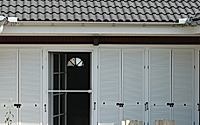The Rise of Synthetic Roofing: Comparing Options for Durability and Style
Synthetic roofing has become an increasingly popular option for homeowners and builders alike. With advancements in technology and manufacturing, synthetic materials are now able to mimic the look and durability of traditional roofing materials such as wood, slate, and clay. This has led to a rise in the use of synthetic roofing across the industry.
Understanding Synthetic Roofing Materials
Composition and Types
Synthetic roofing materials are manufactured to replicate the look and feel of natural roofing materials, such as slate, wood, and clay. These materials are typically made from a mixture of plastic, rubber, and other synthetic materials. The composition of synthetic roofing materials varies depending on the manufacturer, but they are all designed to be durable, weather-resistant, and long-lasting.
There are several types of synthetic roofing materials available on the market, including:
- Polymer roofing: Made from a mixture of plastic and rubber, polymer roofing is a popular choice for those looking for a durable and lightweight roofing material.
- Composite roofing: Made from a combination of recycled plastic and wood fibers, composite roofing is a sustainable and eco-friendly option. It is also resistant to mold, mildew, and insects.
- Metal roofing: While not technically a synthetic material, metal roofing is often included in discussions of synthetic roofing options due to its durability and longevity. Metal roofing is available in a variety of styles and colors and can last up to 50 years or more.
Benefits of Synthetic Roofing
There are several benefits to choosing synthetic roofing materials for your home. These benefits include:
Durability: Synthetic roofing materials are designed to be durable and long-lasting, making them a great investment for homeowners.
- Weather resistance: Synthetic roofing materials are resistant to weather damage, including hail, wind, and rain.
- Low maintenance: Synthetic roofing materials require very little maintenance compared to natural roofing materials.
- Energy efficiency: Some synthetic roofing materials, such as metal roofing, can help reduce energy costs by reflecting sunlight and reducing heat transfer.
Expert roof repair in Indianapolis can help homeowners choose the best synthetic roofing material for their home and ensure that it is installed properly.
Evaluating Durability and Style
When it comes to synthetic roofing, homeowners have a variety of options to choose from. Two of the most important factors to consider are durability and style.
Longevity and Performance
One of the main advantages of synthetic roofing is its longevity and durability. Synthetic roofing materials are designed to withstand harsh weather conditions, such as heavy rain, wind, and hail. They are also resistant to rot, mold, and mildew, which can be a common problem with traditional roofing materials.
Aesthetic Options and Customization
Another advantage of synthetic roofing is the wide range of aesthetic options available. Homeowners can choose from a variety of colors, textures, and styles to match their home’s architecture and personal style.
Maintenance and Repair Considerations
Finally, homeowners should consider the maintenance and repair requirements of synthetic roofing materials. While synthetic roofing is generally low-maintenance, it’s still important to keep up with regular inspections and cleanings to ensure its longevity and performance. In the event of damage or wear and tear, synthetic roofing materials can often be repaired or replaced more easily than traditional materials.
- by Matt Watts





